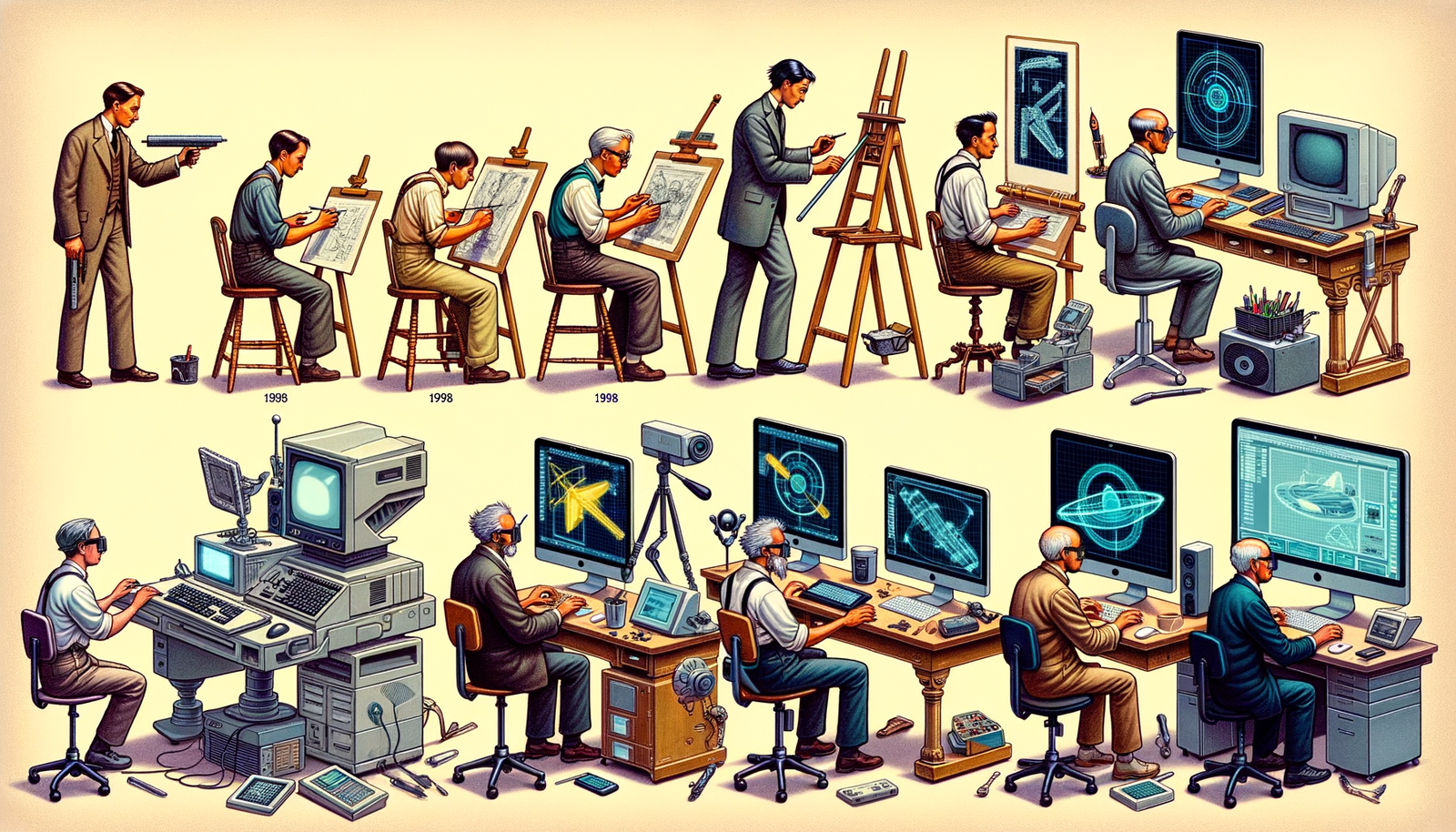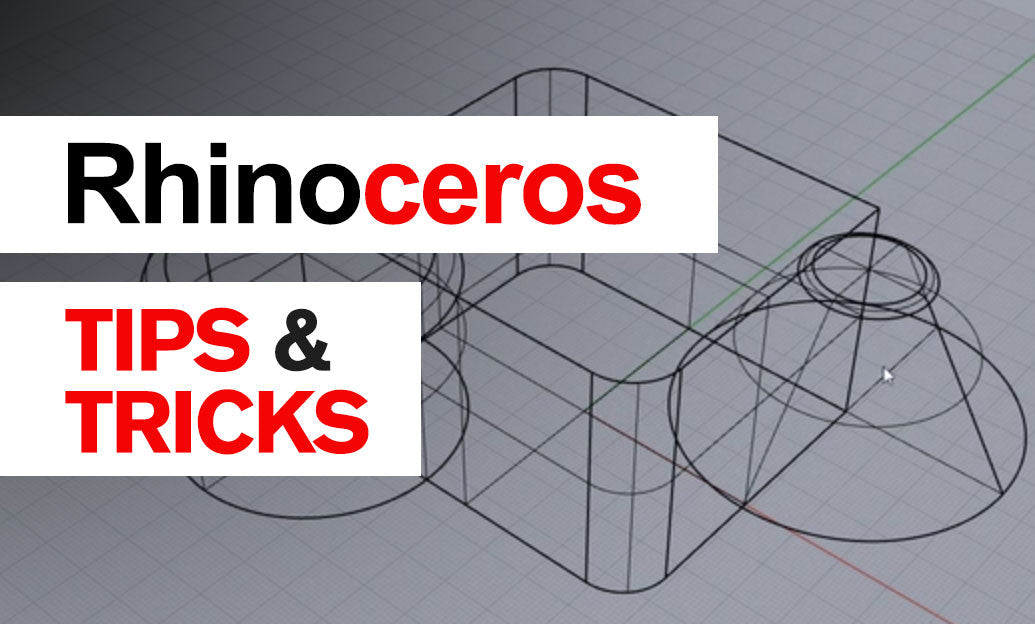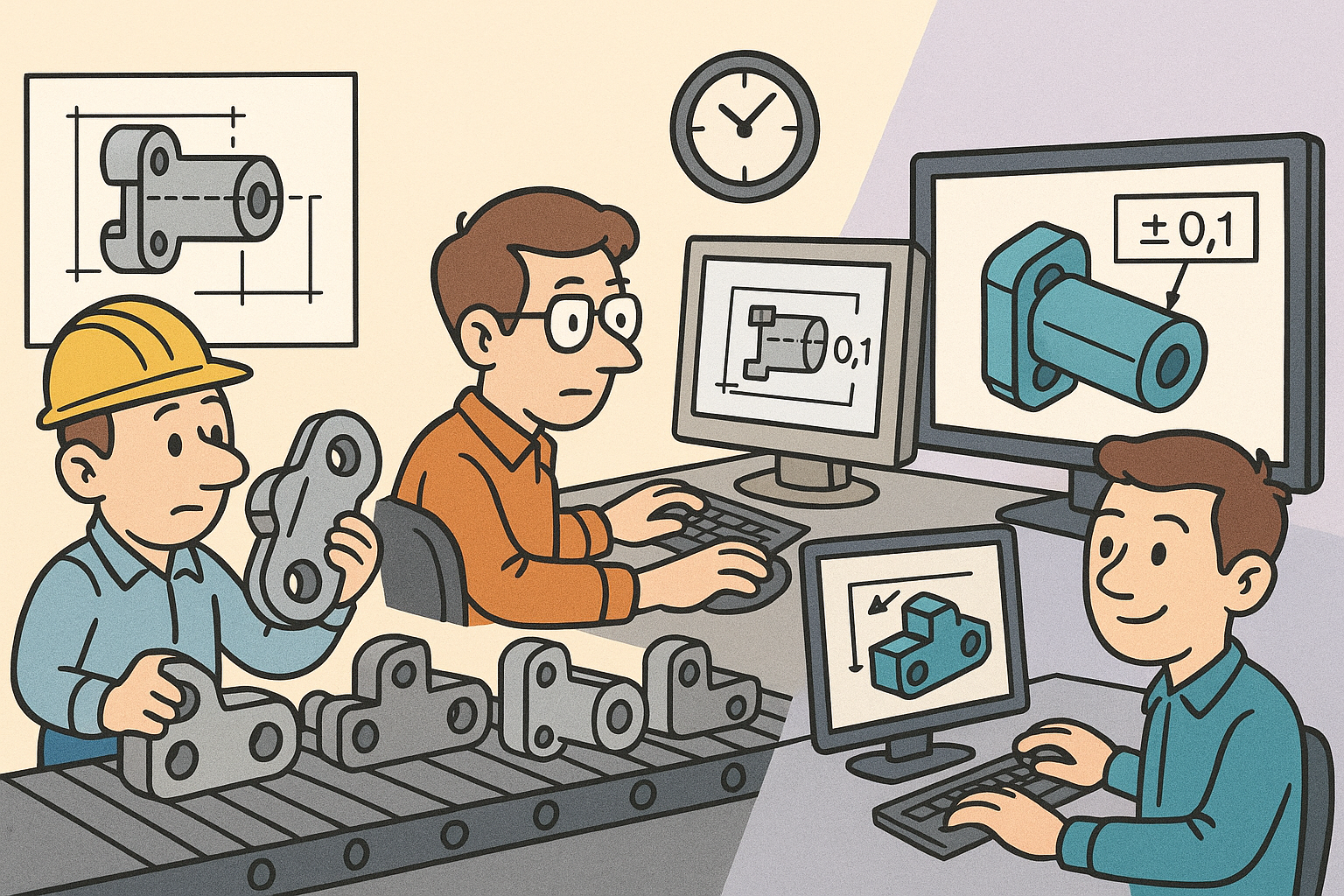Your Cart is Empty
Customer Testimonials
-
"Great customer service. The folks at Novedge were super helpful in navigating a somewhat complicated order including software upgrades and serial numbers in various stages of inactivity. They were friendly and helpful throughout the process.."
Ruben Ruckmark
"Quick & very helpful. We have been using Novedge for years and are very happy with their quick service when we need to make a purchase and excellent support resolving any issues."
Will Woodson
"Scott is the best. He reminds me about subscriptions dates, guides me in the correct direction for updates. He always responds promptly to me. He is literally the reason I continue to work with Novedge and will do so in the future."
Edward Mchugh
"Calvin Lok is “the man”. After my purchase of Sketchup 2021, he called me and provided step-by-step instructions to ease me through difficulties I was having with the setup of my new software."
Mike Borzage
Design Software History: Evolution of Computer-Aided Industrial Design: From Manual Drafting to AI-Enhanced Innovation
July 21, 2024 7 min read


The Origins of Computer-Aided Industrial Design
Early Beginnings
Before the advent of computers, industrial design was a meticulous and laborious process involving manual techniques and tools. The early industrial designers relied heavily on hand-drawn sketches, physical prototypes, and various drafting instruments to communicate their ideas and refine their designs. These methods, while effective, were time-consuming and limited by the precision and accuracy of human hands.
Manual drafting tables, T-squares, compasses, and French curves were the staples of an industrial designer's toolkit. The drafting table, in particular, became a symbol of the pre-digital era of design, serving as the canvas where designers translated their visions into detailed blueprints. Despite the limitations, these tools laid the foundation for the principles and practices that would later be enhanced and revolutionized by computer technology.
The Advent of Computers in Industrial Design
The transition from manual drafting to computer-aided techniques marked a significant turning point in industrial design. The introduction of computers brought a new level of precision, efficiency, and flexibility to the design process. One of the most pivotal moments in this transition was the development of Ivan Sutherland's Sketchpad in the 1960s.
Sketchpad, often considered the precursor to modern CAD (Computer-Aided Design) systems, allowed designers to interact with the computer through a graphical interface. This innovation enabled the creation and manipulation of geometric shapes on a computer screen, paving the way for more sophisticated software that would follow. Sutherland's work demonstrated the potential of computer technology to transform the way designers approached their craft.
Key Pioneers and Companies
Several key pioneers and companies were instrumental in the early development of computer-aided industrial design. General Motors and Boeing were among the first to recognize the potential of computer technology in design and engineering. In the 1970s, General Motors developed the DAC-1 (Design Augmented by Computers) system, which allowed for the creation of 3D models and was used in automotive design. Similarly, Boeing's use of computer technology in aircraft design set new standards for precision and efficiency.
Other notable companies like Auto-trol and Computervision emerged in the 1970s and 1980s, contributing to the development of early CAD systems. Auto-trol's DRAFT system and Computervision's CADDS software were among the first commercial CAD products, offering designers and engineers new tools for creating and modifying complex designs. These companies played a crucial role in the transition from manual drafting to computer-aided techniques, laying the groundwork for the sophisticated CAID software we use today.
Technological Advancements and Software Development
Evolution of CAID Software
The evolution of CAID software has been marked by significant advancements in both functionality and usability. One of the most notable transitions was the shift from 2D drafting to 3D modeling. Early CAD systems primarily focused on 2D representations, but as computing power increased, so did the capabilities of the software. The introduction of 3D modeling allowed designers to create more realistic and detailed representations of their designs, enhancing both the design process and the final product.
Several major software products have played pivotal roles in this evolution. Alias, a software originally developed for the entertainment industry, quickly gained popularity among industrial designers for its powerful 3D modeling capabilities. SolidWorks, introduced in the mid-1990s, brought parametric modeling to the forefront, allowing designers to easily modify and update their designs based on predefined parameters. Rhino, known for its versatility and precision, became a favorite among designers working on complex surfaces and organic shapes.
Core Technologies and Innovations
One of the core technologies that revolutionized CAID software is NURBS (Non-Uniform Rational B-Splines). NURBS are mathematical representations that allow for the creation of smooth, complex surfaces, which are essential in industrial design. Unlike traditional polygonal modeling, NURBS enable designers to create highly detailed and accurate models that can be easily manipulated and refined. This technology has had a profound impact on surface modeling, making it possible to design intricate and aesthetically pleasing products with precision.
Another significant innovation in CAID software is the integration of parametric and direct modeling techniques. Parametric modeling, as seen in software like SolidWorks and CATIA, uses parameters to define the geometry of a design. This allows designers to create relationships between different parts of a model, making it easier to update and modify designs. Direct modeling, on the other hand, offers a more flexible approach, allowing designers to interact directly with the geometry without the constraints of predefined parameters. The combination of these techniques has provided designers with powerful tools to tackle a wide range of design challenges.
Influential Figures and Contributions
Several influential figures and companies have made significant contributions to the field of computer-aided industrial design. Designer Marc Newson is known for his innovative use of CAID software in creating iconic products that blend form and function. His work demonstrates the potential of computer-aided design to push the boundaries of creativity and innovation.
Companies like PTC (Parametric Technology Corporation) and Dassault Systèmes have also played crucial roles in advancing CAID software. PTC's Pro/ENGINEER, one of the first parametric modeling programs, set new standards for design and engineering software. Dassault Systèmes' CATIA, originally developed for the aerospace industry, has become a cornerstone in automotive and industrial design, offering comprehensive solutions for everything from initial concept to final product.
Impact on Design Processes and Industries
Transforming Industrial Design Practices
CAID software has fundamentally transformed industrial design practices, streamlining the workflow from concept to final product. The ability to create detailed digital models has reduced the need for physical prototypes, saving both time and resources. Designers can now iterate on their designs more quickly, exploring different concepts and making adjustments with ease. This has led to more efficient and collaborative design processes, where teams can work together seamlessly across different stages of a project.
Industries Revolutionized by CAID
Several industries have been revolutionized by the adoption of CAID software. In the automotive industry, software like CATIA has played a crucial role in designing vehicles with intricate details and high-performance standards. From initial sketches to final manufacturing, CAID software supports every step of the automotive design process, enabling designers to create innovative and aesthetically pleasing cars.
The consumer products industry has also benefited significantly from CAID software. The design of household items, electronics, and other consumer goods has become more efficient and precise. The ability to create detailed 3D models allows designers to visualize and test their products in a virtual environment, ensuring that the final product meets both functional and aesthetic requirements. This has led to higher-quality products and faster time-to-market.
Integration with Other Technologies
CAID software has also fostered collaboration with other technologies such as CAD (Computer-Aided Design) and CAM (Computer-Aided Manufacturing). The integration of CAID with CAD allows for seamless transitions between design and engineering, ensuring that the final product is both functional and manufacturable. CAM technology further enhances this process by automating the manufacturing steps, reducing the risk of errors and improving efficiency.
Additionally, CAID has had a significant impact on rapid prototyping and additive manufacturing. The ability to create detailed digital models and convert them into physical prototypes using 3D printing technology has revolutionized the way products are developed. Designers can now test and refine their designs more quickly, leading to faster innovation and improved product quality.
The Future of Computer-Aided Industrial Design
Emerging Trends and Technologies
The future of computer-aided industrial design is being shaped by several emerging trends and technologies. One of the most promising developments is the integration of AI (Artificial Intelligence) and machine learning in CAID software. These technologies have the potential to enhance predictive design, allowing software to suggest design improvements and identify potential issues before they arise. This can lead to more efficient and innovative design processes, as well as higher-quality final products.
Another exciting trend is the rise of virtual and augmented reality in design visualization. VR and AR technologies enable designers to immerse themselves in a virtual environment, interact with their designs in real-time, and make adjustments with a level of realism that was previously unattainable. This can enhance the design process, improve collaboration, and provide clients with a more intuitive understanding of the final product.
Challenges and Opportunities
As the field of computer-aided industrial design continues to evolve, designers and manufacturers face both challenges and opportunities. One of the main challenges is addressing the evolving needs of designers who require more intuitive and user-friendly interfaces. As CAID software becomes more sophisticated, it is essential to ensure that it remains accessible and easy to use, allowing designers to focus on their creative work without being hindered by technical complexities.
Additionally, the rapid pace of technological advancements presents both opportunities and challenges. While new tools and techniques can enhance the design process, they also require continuous learning and adaptation. Designers must stay up-to-date with the latest developments to fully leverage the potential of CAID software and maintain a competitive edge in the industry.
Predictions for the Future
Looking ahead, the future of computer-aided industrial design holds exciting possibilities. One of the key predictions is the potential for further automation in design processes. As AI and machine learning technologies continue to advance, they could take on more complex tasks, allowing designers to focus on higher-level creative decisions. This could lead to a new era of efficiency and innovation in industrial design.
Another promising development is the role of cloud computing in facilitating collaborative design efforts. Cloud-based CAID platforms can enable designers and engineers to work together in real-time, regardless of their physical location. This can enhance collaboration, improve project management, and accelerate the overall design process.
Conclusion
The history of computer-aided industrial design is a testament to the transformative power of technology. From the early days of manual drafting to the sophisticated CAID software of today, the field has undergone remarkable changes that have revolutionized industrial design practices and industries. As we look to the future, the continued integration of emerging technologies promises to further enhance the way designers create and innovate, paving the way for new possibilities and advancements in industrial design.
Also in Design News

From Markups to Data: Governed Custom Measurements for Audit-Ready MEP Takeoffs in Revu
December 28, 2025 8 min read
Read More
Rhino 3D Tip: Manufacturing-Ready STEP and IGES Export Checklist for Rhino
December 27, 2025 2 min read
Read More
Design Software History: From Interchangeability to Semantic PMI: A History of Tolerancing in CAD
December 27, 2025 12 min read
Read MoreSubscribe
Sign up to get the latest on sales, new releases and more …


